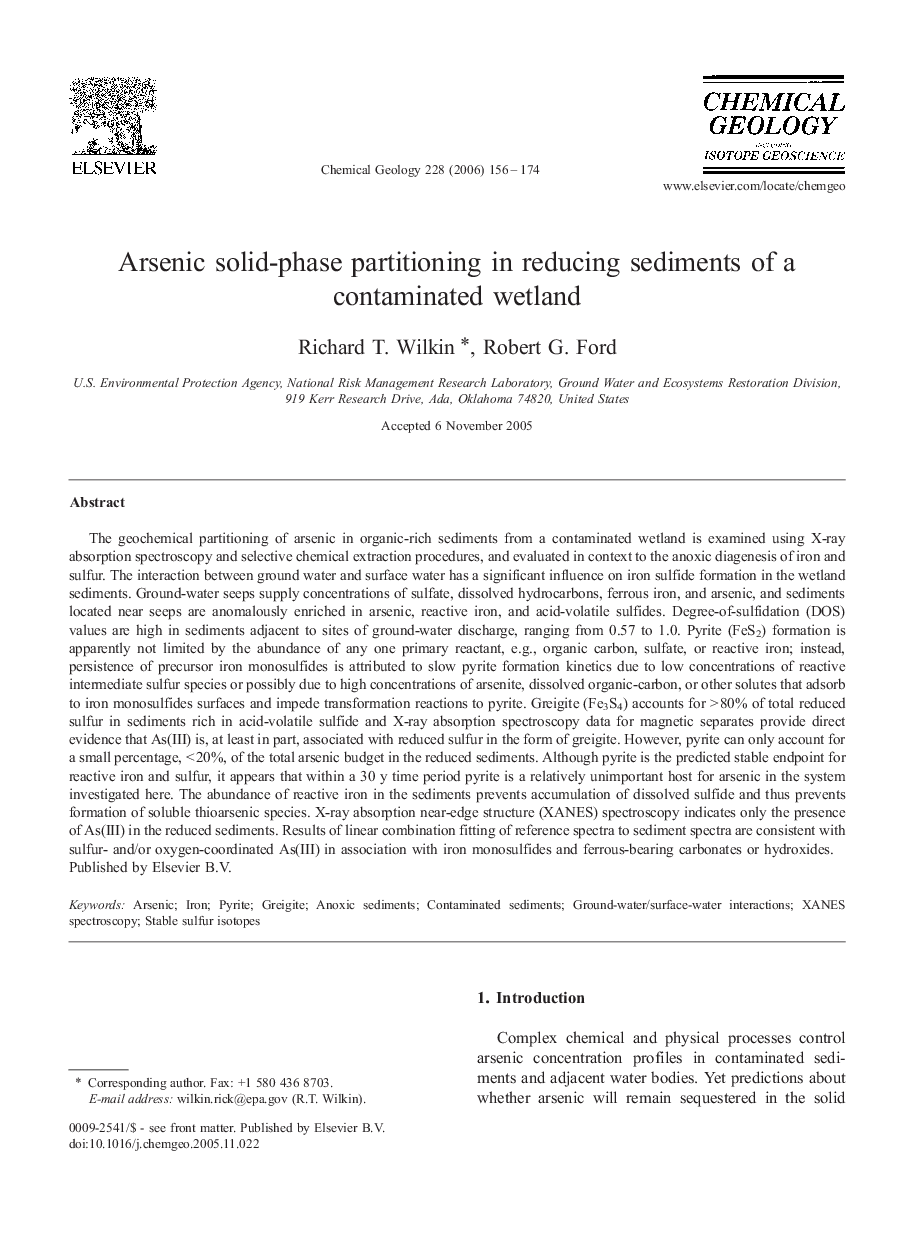| کد مقاله | کد نشریه | سال انتشار | مقاله انگلیسی | نسخه تمام متن |
|---|---|---|---|---|
| 4701357 | 1637771 | 2006 | 19 صفحه PDF | دانلود رایگان |

The geochemical partitioning of arsenic in organic-rich sediments from a contaminated wetland is examined using X-ray absorption spectroscopy and selective chemical extraction procedures, and evaluated in context to the anoxic diagenesis of iron and sulfur. The interaction between ground water and surface water has a significant influence on iron sulfide formation in the wetland sediments. Ground-water seeps supply concentrations of sulfate, dissolved hydrocarbons, ferrous iron, and arsenic, and sediments located near seeps are anomalously enriched in arsenic, reactive iron, and acid-volatile sulfides. Degree-of-sulfidation (DOS) values are high in sediments adjacent to sites of ground-water discharge, ranging from 0.57 to 1.0. Pyrite (FeS2) formation is apparently not limited by the abundance of any one primary reactant, e.g., organic carbon, sulfate, or reactive iron; instead, persistence of precursor iron monosulfides is attributed to slow pyrite formation kinetics due to low concentrations of reactive intermediate sulfur species or possibly due to high concentrations of arsenite, dissolved organic-carbon, or other solutes that adsorb to iron monosulfides surfaces and impede transformation reactions to pyrite. Greigite (Fe3S4) accounts for > 80% of total reduced sulfur in sediments rich in acid-volatile sulfide and X-ray absorption spectroscopy data for magnetic separates provide direct evidence that As(III) is, at least in part, associated with reduced sulfur in the form of greigite. However, pyrite can only account for a small percentage, < 20%, of the total arsenic budget in the reduced sediments. Although pyrite is the predicted stable endpoint for reactive iron and sulfur, it appears that within a 30 y time period pyrite is a relatively unimportant host for arsenic in the system investigated here. The abundance of reactive iron in the sediments prevents accumulation of dissolved sulfide and thus prevents formation of soluble thioarsenic species. X-ray absorption near-edge structure (XANES) spectroscopy indicates only the presence of As(III) in the reduced sediments. Results of linear combination fitting of reference spectra to sediment spectra are consistent with sulfur- and/or oxygen-coordinated As(III) in association with iron monosulfides and ferrous-bearing carbonates or hydroxides.
Journal: Chemical Geology - Volume 228, Issues 1–3, 16 April 2006, Pages 156–174